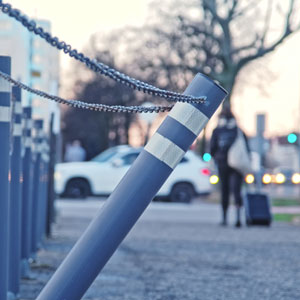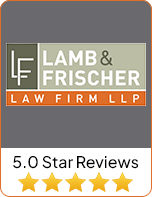Understanding Public Property Accidents In California

In this article, you can discover…
- What determines if your injury occurred on public property.
- Who’s responsible for maintaining public property in California.
- What to expect as far as awards or damages in a public property accident.
How Do I Know If My Injury Occurred on Public Property?
In some cases, it may be obvious that your injury occurred on public property. In other cases, less so. If your injury took place on a sidewalk, public park, or public playground, it’s likely to have taken place on public property.
However, a place like a football stadium or arena could be publicly or privately owned. To determine whether your injury took place on public or private property, it’s best to consult with a personal injury attorney.
What Are Some Examples of Common Public Property Accidents?
A common injury type is a trip and fall due to defects in public sidewalks. Less common yet still possible cases have involved trees falling on public property and landing on passers-by, or inadequate security or camera coverage in a public location may also be a basis for a lawsuit.
Dangerous public road conditions or highway construction zones with poor safety precautions can also cause an accident and warrant legal recourse.
Who’s Responsible for Maintaining Public Property in California?
In most California cities, the sidewalk outside of a property is the liability of both the property owner and the city or county. When an injury-causing incident occurs because of a poorly maintained public sidewalk, both the adjacent property owner and the State are generally held responsible.
Most roads will be the responsibility of the city, county, or State where that stretch of the road is located. In some cases, roads or stretches of road may be owned by private individuals or even corporations such as when Union Pacific Railroad owned several streets in and around the Mission Bay area of San Francisco. Even though the streets were public right-of-way, UPR owned the streets and thus had a duty to maintain them in a reasonable safe condition.

Attorneys Bryan Lamb & Richard Frischer are accomplished lawyers who have helped hundreds of clients just like you seek compensation after public property accidents. Serving Californians for over 30 years, they’re prepared to review your case and empower you to move forward in seeking damages and help.
Still have questions about your public property accident? Contact The Lamb & Frischer Law Firm at (415) 966-4471 for an initial consultation today.
How Does Liability Differ in Public Property Accidents Versus Private Property Accidents?
The government has a great deal of immunity from lawsuits that private individuals do not. For example, if the State decided to design a street in a certain way and understood the possible dangers of that specific design and built it anyway, they may potentially be immune under a law known as design immunity. However, immunities are highly technical arguments with many exceptions. It is best to consult an attorney to learn whether an immunity applies or if there are exceptions.
The law also requires that the State know or should have known about the defect before they are sued. If a public street’s pavement cracked an hour before it was tripped on, the State may potentially not be liable if they lacked the time to notice and address the problem. An investigation is necessary to tell if the public entity knew or should have known of the defect, as in some instances a defect existing for an hour may be enough time for a public entity to determine the existence of a defect and take some precautionary measures, even if the defect cannot be fixed immediately.
Finally, the statute of limitations to file a claim against public entities is six months, significantly shorter than the 2-year statute of limitation in which to file a lawsuit against a private individual for personal injuries. The claim is a mandatory pre-requisite to a lawsuit, and something an attorney can help you file.
What Should I Do Immediately After Having an Accident on Public Property?
Seek medical attention if you need it. If at all possible, photograph the defect that caused the accident or the site of the accident. Both photo and video evidence are helpful, and the sooner you record these images, the better.
At times, injured parties have returned to an accident site weeks or months later to collect evidence, the site has been repaired, and proving State negligence has become more difficult.
Can I Sue the Government for Injuries that Occurred on Public Property?
Yes, you should feel free to bring a lawsuit if you’ve been injured on public property. After you’ve contacted a lawyer, you and your attorney can review evidence, and your lawyer can determine if immunity may exist.
Your attorney will understand how to navigate claims of immunity and will be familiar with the responses likely to be given by the city, county, or State. In each case, you deserve to be heard, and the government deserves to be held accountable for your injury.
How Much Can I Expect in Compensation and Damages?
The government tends to be fairly conservative in evaluating damages in settlements. The government also tends to fight lawsuits harder than a private individual would. These factors shouldn’t prevent you from seeking recovery from a public entity and holding the responsible party accountable. A court will ultimately decide the amount of compensation if the public entity does not offer an agreeable settlement amount.
It’s still worth your while to contact an attorney and review your options. Not attempting to hold the State responsible for injuries caused by their neglect simply encourages poor infrastructure and disregard of public spaces. Allow an accomplished law firm to review your case and weigh in on your options and rights as an injured party.
For more information on Understanding Public Property Accidents In California, an initial consultation is your next best step. Get the information and legal answers you are seeking by calling
(415) 966-4471 today.

Attorneys Bryan Lamb & Richard Frischer are accomplished lawyers who have helped hundreds of clients just like you seek compensation after public property accidents. Serving Californians for over 30 years, they’re prepared to review your case and empower you to move forward in seeking damages and help.
Still have questions about your public property accident? Contact The Lamb & Frischer Law Firm at (415) 966-4471 for an initial consultation today.